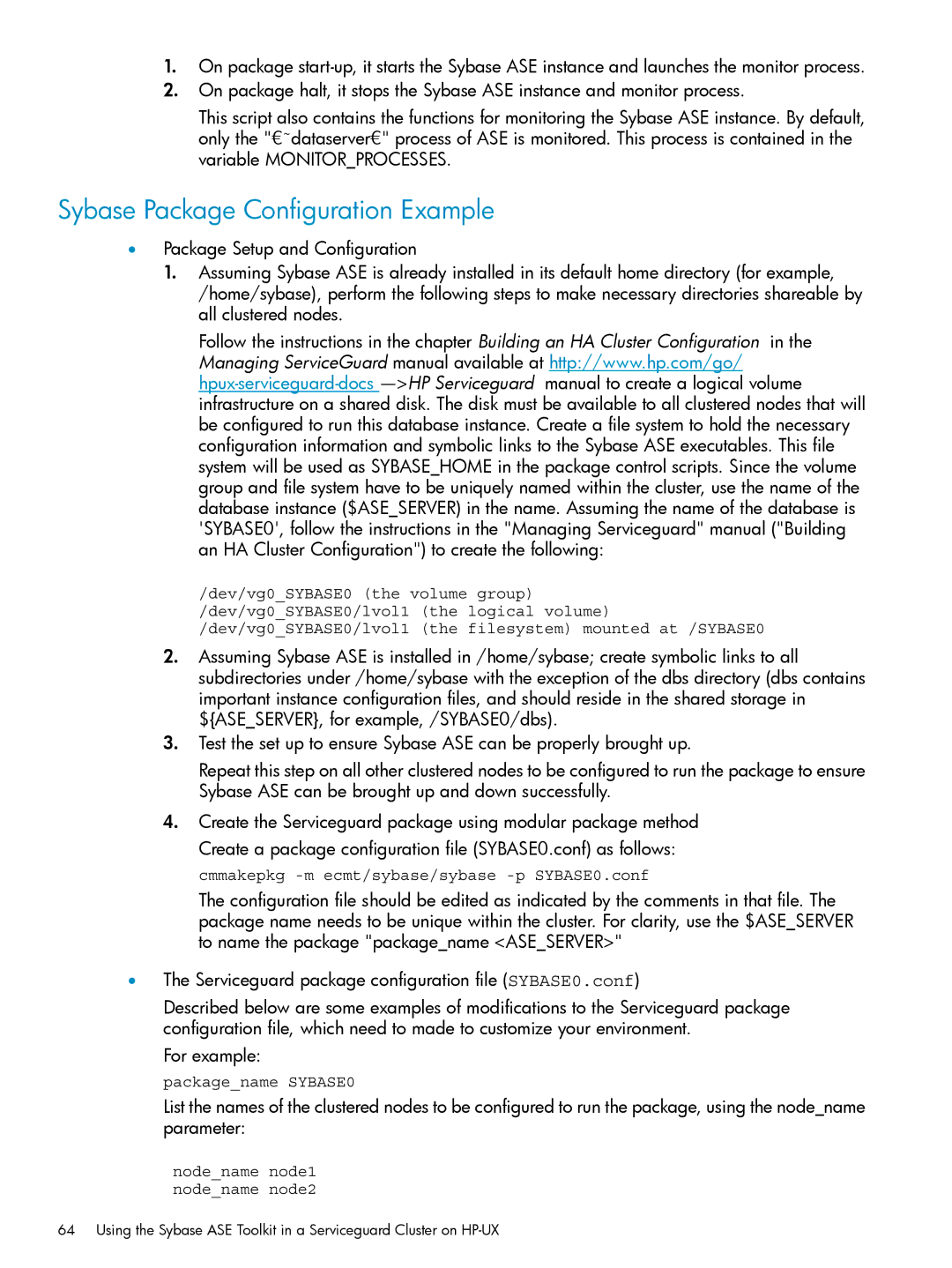1.On package
2.On package halt, it stops the Sybase ASE instance and monitor process.
This script also contains the functions for monitoring the Sybase ASE instance. By default, only the "€˜dataserver€" process of ASE is monitored. This process is contained in the variable MONITOR_PROCESSES.
Sybase Package Configuration Example
•Package Setup and Configuration
1.Assuming Sybase ASE is already installed in its default home directory (for example, /home/sybase), perform the following steps to make necessary directories shareable by all clustered nodes.
Follow the instructions in the chapter Building an HA Cluster Configuration in the Managing ServiceGuard manual available at http://www.hp.com/go/
/dev/vg0_SYBASE0 (the volume group) /dev/vg0_SYBASE0/lvol1 (the logical volume) /dev/vg0_SYBASE0/lvol1 (the filesystem) mounted at /SYBASE0
2.Assuming Sybase ASE is installed in /home/sybase; create symbolic links to all subdirectories under /home/sybase with the exception of the dbs directory (dbs contains important instance configuration files, and should reside in the shared storage in ${ASE_SERVER}, for example, /SYBASE0/dbs).
3.Test the set up to ensure Sybase ASE can be properly brought up.
Repeat this step on all other clustered nodes to be configured to run the package to ensure Sybase ASE can be brought up and down successfully.
4.Create the Serviceguard package using modular package method Create a package configuration file (SYBASE0.conf) as follows: cmmakepkg
The configuration file should be edited as indicated by the comments in that file. The package name needs to be unique within the cluster. For clarity, use the $ASE_SERVER to name the package "package_name <ASE_SERVER>"
•The Serviceguard package configuration file (SYBASE0.conf)
Described below are some examples of modifications to the Serviceguard package configuration file, which need to made to customize your environment.
For example:
package_name SYBASE0
List the names of the clustered nodes to be configured to run the package, using the node_name parameter:
node_name node1 node_name node2
64 Using the Sybase ASE Toolkit in a Serviceguard Cluster on
